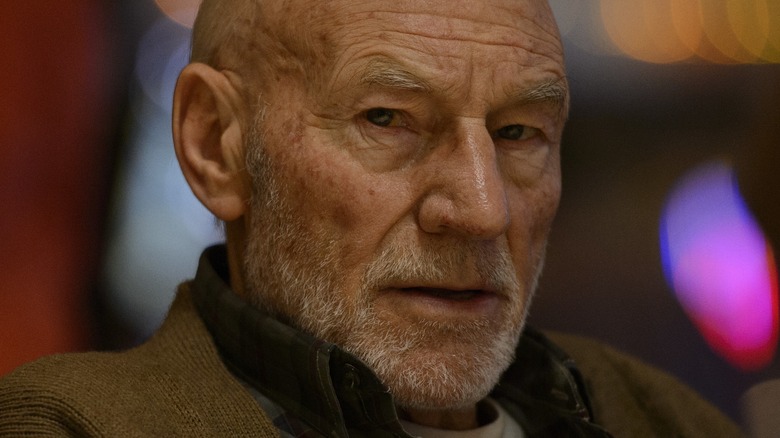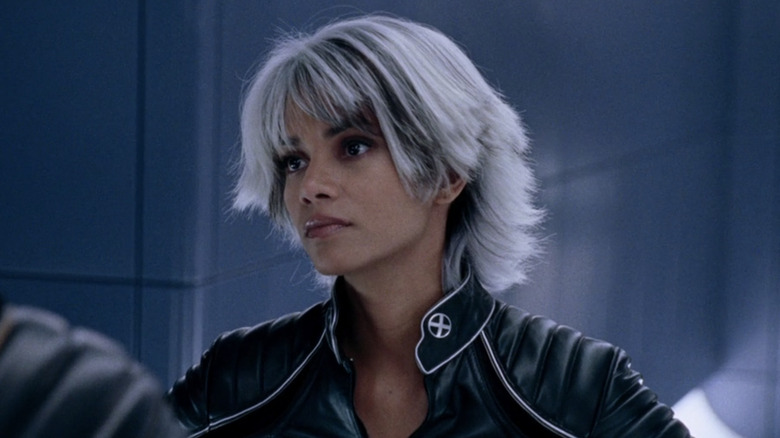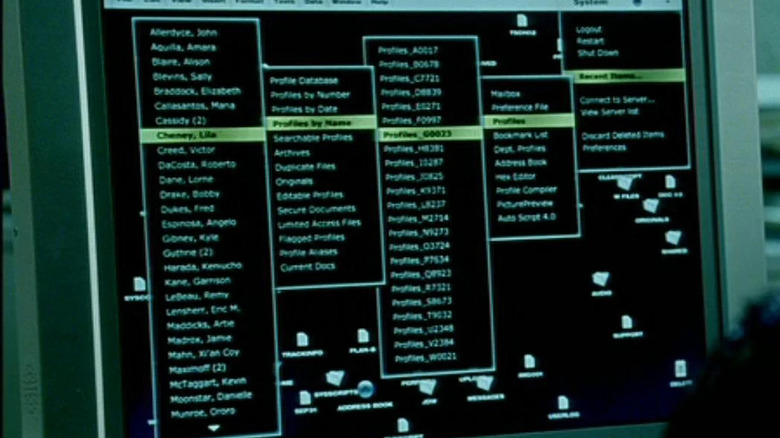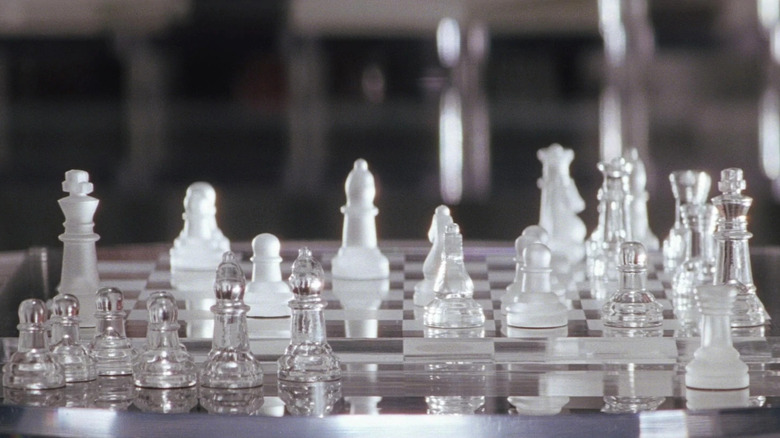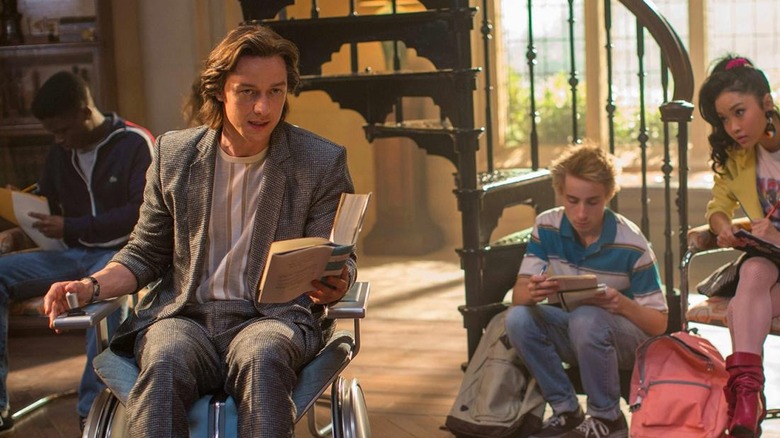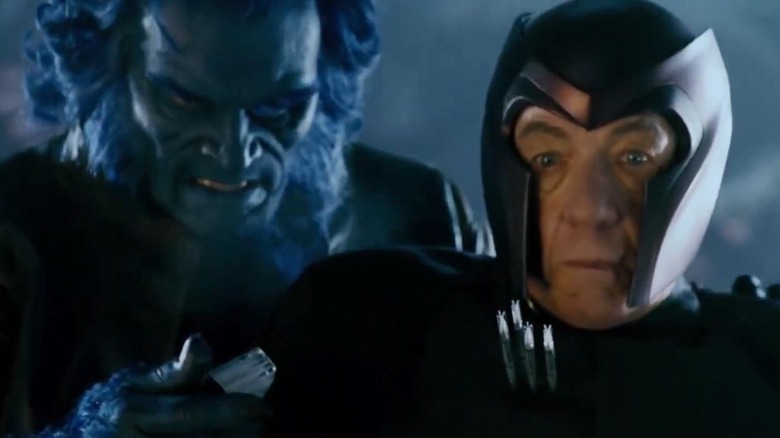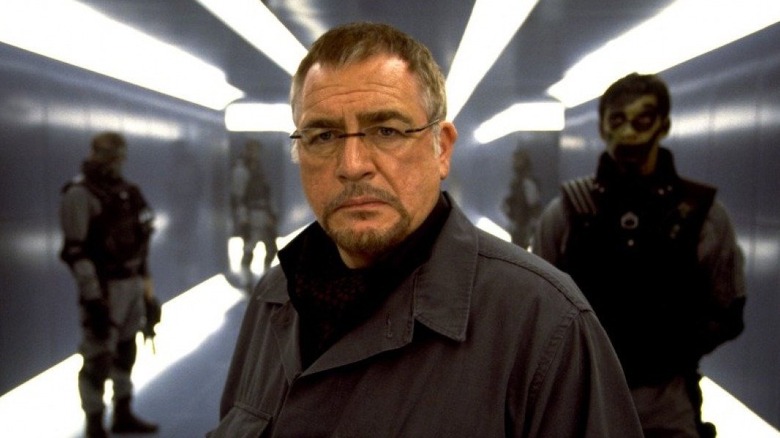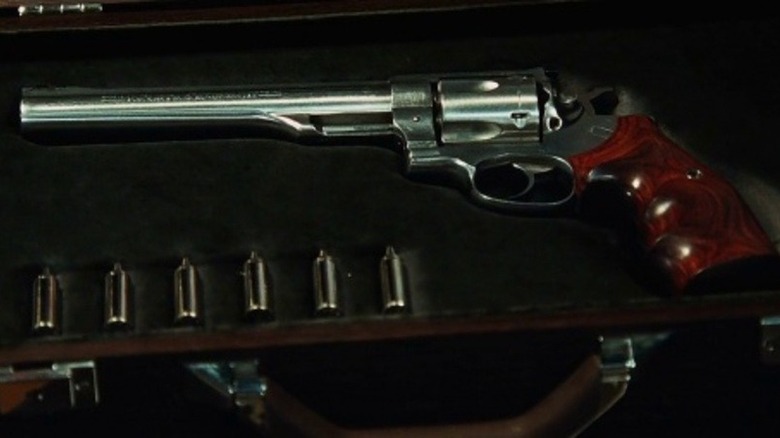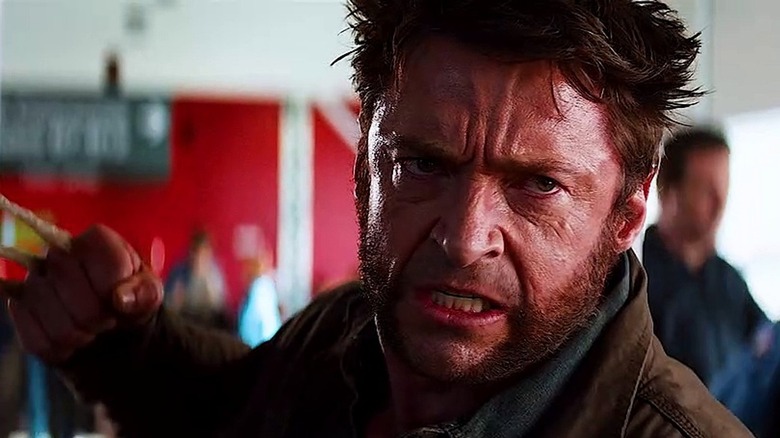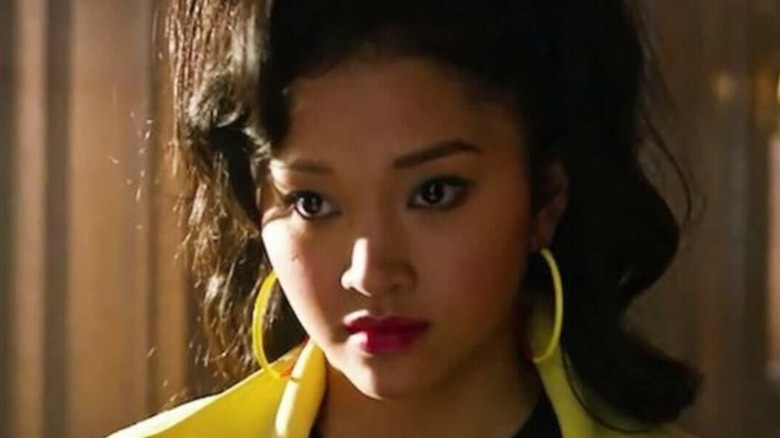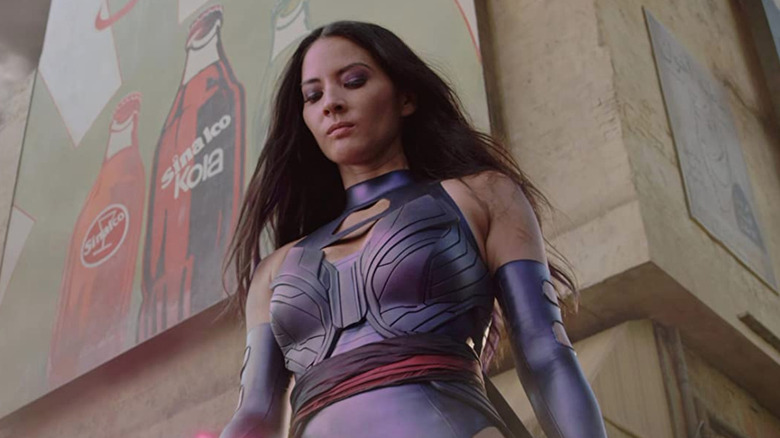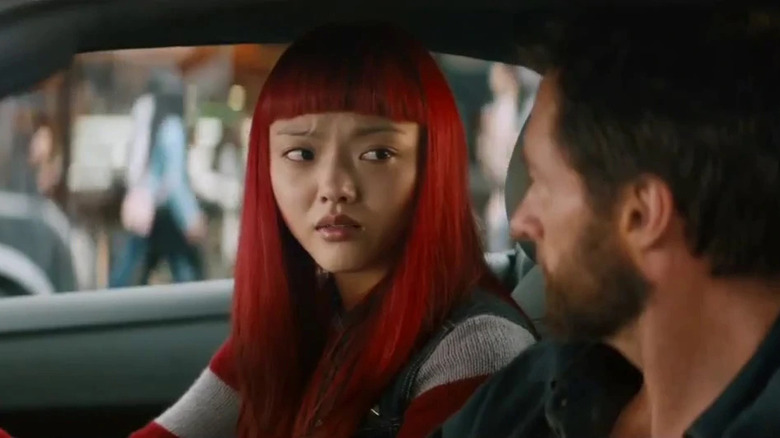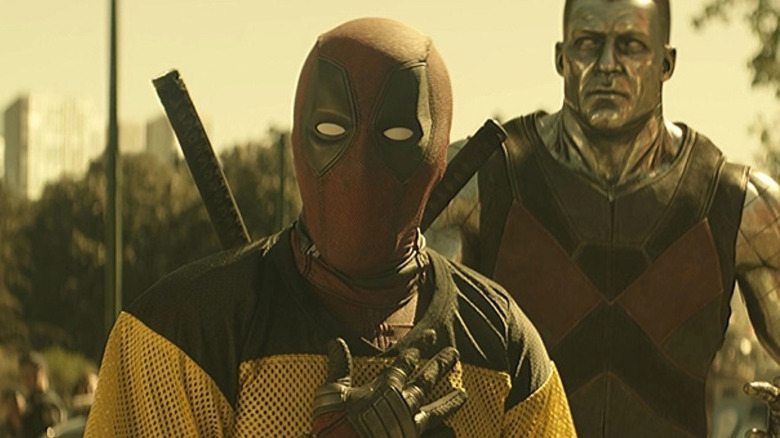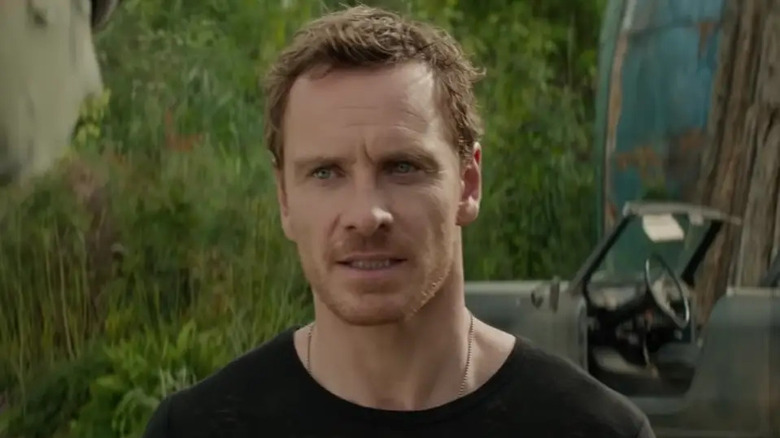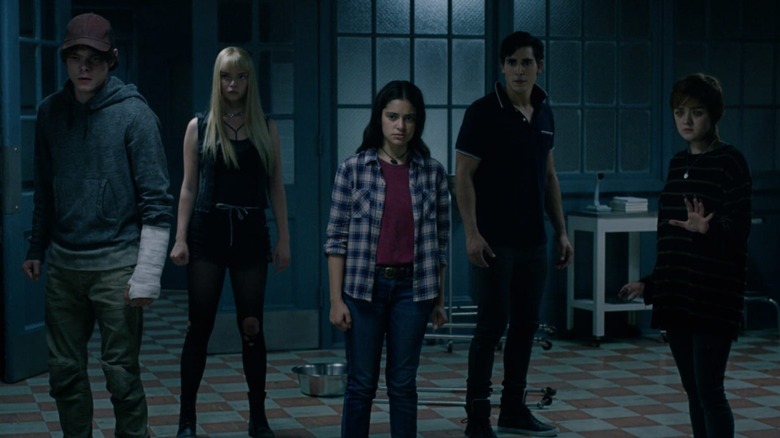Things In The X-Men Franchise You Only Notice After Watching More Than Once
Before Marvel Studios launched its enormously successful Marvel Cinematic Universe, 20th Century Fox had a thriving superhero universe of its own with its long-running "X-Men" film franchise. Launching in 2000, the movies followed the eponymous superhero team as they used their incredible powers to defend a world that hates and fears them, often from fellow mutants looking to subjugate humanity. The films brought fan-favorite characters like Wolverine, Nightcrawler, and Deadpool to the big screen for the first time while kickstarting the careers of many prominent members of its casts, including Hugh Jackman.
With over a dozen films in Fox's franchise, there are certain nuances, small details, and plot holes that are only truly noticeable to audiences after multiple viewings of each installment. Here are things that may only occur to viewers after repeated sittings, from character traits that are dropped without explanation across the series to glaring inconsistencies with the movies' overarching timeline.
Storm's vanishing accent
The Xavier School for Gifted Youngsters welcomes students and instructors from all corners of the globe, with Ororo Monroe, best known as the weather-controlling superhero Storm, from Africa. The "X-Men" films set in the initial timeline have Academy Award winner Halle Berry play the fan-favorite role, usually with Berry using her natural American accent. However, upon repeat viewings, audiences may be able to discern that Berry is utilizing a subtle, if inconsistent accent in the original "X-Men" movie.
Most noticeable when Storm is confronting the supervillain Toad on Liberty Island, Berry's Kenyan accent as Storm is more prominently pronounced in deleted scenes from the film. Neither Berry nor the filmmakers have publicly commented on why Storm dropped the accent altogether by "X2," though they may have felt it wasn't working for the performance. It's worth noting, though, that while playing a younger version of Storm in "X-Men: Apocalypse," actor Alexandra Shipp uses a Kenyan accent, which she retains for "Dark Phoenix."
Stryker's mutant database
"X2" revolves around Colonel William Stryker carrying out his longstanding vendetta against mutants and Charles Xavier after years of extensive planning and preparation. As Mystique hacks into Stryker's private database to learn how to free Magneto from federal custody, she discovers the Colonel's files on other mutants. The names and folders she finds listed are a veritable treasure trove of "X-Men" Easter eggs and deep cuts that practically demand repeat viewings in slow-motion to catch them all.
Among the mutants listed in Stryker's database are many characters that would prominently appear in later "X-Men" movies, including Remy LeBeau, the Maximoffs, Elizabeth Braddock, and Jamie Madrox. Other major names listed that would not go on to appear in the film series are Garrison Kane, Omega Red, and the Von Strucker twins, each of whom has an antagonistic history with the X-Men in the comics. The X-Men have one of the most extensive lores to draw from in the comics, and Stryker's database offers a fuller glimpse at the deep bench of characters available to potentially include.
Magneto and Professor X's chess games
For all the animosity between them and differences in perspective regarding mutantkind's coexistence with humanity, there is an underlying respect and enduring friendship between Professor X and Magneto. One way that the two old frenemies reconnect is by catching up over a game of chess, seen with both the original movies and the prequel films. However, this simple board game is more than just a recurring touchstone between Charles Xavier and Eric Lensherr but also alludes to their respective leadership styles.
At the end of 2000's "X-Men," Charles plays a game of chess with Eric while the latter is imprisoned by the government in a plastic and glass cell. By utilizing a strategy that relies on pawns, Charles emerges triumphant, circumventing Eric's propensity to focus using his power pieces. This tactical difference is highlighted further during the climactic battle of "X-Men: The Last Stand," with Eric callously sacrificing the bulk of his mutant extremists in an opening attack, coldly remarking that "pawns go first." With Magneto's Brotherhood decisively losing the battle, his strategy could stand to improve as much as his chess game.
The Once and Future King
T.H. White's 1958 literary collection "The Once and Future King" compiles and updates the legend of King Arthur and the Knights of the Round Table. With its themes revolving around rises to power and crises of leadership, the novel has subtly appeared throughout the "X-Men" films. Specifically, both Magneto and Professor X are shown to have an appreciation for White's novel, with both mutant leaders seen with the book.
While locked away in federal custody in "X2," Magneto is seen reading "The Once and Future King" in his cell before being attacked by his cruel guard. At the end of the film, Professor X uses the novel to lead a class discussion with a group of students back at the X-Mansion. The text's continued relevance resurfaces in "X-Men: Apocalypse," with Professor X reading passages from the novel to his class in 1983. To quietly underscore the connection to "X2," Charles is reading from the same edition seen in the 2003 film in "Apocalypse."
A false mutant cure
The inciting development in "The Last Stand" that leads the X-Men and Brotherhood of Mutants to battle each other for the fate of mutantkind and humanity revolves on a government-sponsored cure for mutants. At the start of the film, a serum is introduced that allegedly nullifies the effects of the X-chromosome, the source of a mutant's given superhuman abilities. Determined to destroy the cure before it's forcibly used against mutants, Magneto proactively leads the Brotherhood to attack the serum's manufacturing facility in San Francisco, with the X-Men moving to stop him and his forces.
During the final battle, Beast injects Magneto with the cure, seemingly removing the supervillain's mastery over magnetism for good. However, the closing scene in "The Last Stand" has Magneto move a metal chess piece with his mind, hinting that the cure isn't as permanent as it appeared. This is confirmed in the mid-credits scene in "The Wolverine," with Magneto resurfacing with complete control over his powers once again. With this in mind, this largely makes the wider conflict that took place in "The Last Stand" a pointless burst of violence between the two mutant factions.
The curious case of William Stryker
Colonel William Stryker is a recurring antagonist across both timelines of the cinematic universe, often targeting Wolverine to transform him into the ultimate, mindless weapon. Stryker's connection to Logan is revealed in "X-Men Origins: Wolverine," with the colonel going rogue and casually murdering a general who questions the efficacy and morality of the Weapon X program. The mid-credits scene to the prequel has Stryker taken into military custody over the general's murder, raising questions at how he was able to resurface with the president's support decades later in "X2."
The "First Class" timeline only makes Stryker's story more confusing and convoluted, starting with "Days of Future Past," ostensibly set before "X-Men Origins: Wolverine." With the timeline altered, Mystique disguises herself as Stryker to rescue Wolverine from the bottom of the Potomac River only for Stryker to be seen experimenting on Logan years later in "Apocalypse." The discrepancy between Stryker's predicaments across subsequent movies is never explained, causing some of the series' most confusing plot holes.
The magical mindwipe bullets
There are plenty of plot holes and questionable narrative decisions throughout "X-Men Origins: Wolverine" but the most egregious involves its explanation for how Logan developed his amnesia. After realizing Stryker manipulated him into undergoing the Weapon X procedure all along, Logan tracks down his former commanding officer with the intent to kill him. Nonplussed by Wolverine now being coated with a virtually indestructible adamantium alloy, Stryker unveils adamantium bullets powerful enough to pierce Logan's metal-plated skull.
What makes the scene particularly ludicrous isn't that Stryker isn't necessarily trying to kill Wolverine but predicts that the adamantium bullets will incur brain damage that will conveniently erase Logan's memory. This is made all the more infuriating by the film introducing a procedure capable of wiping Logan's mind that is quickly discarded in favor of using the bullets to accomplish the same task. To further underscore how questionable this choice was, the other "X-Men" movies make no mention of damage to Wolverine's skull whenever his health is assessed.
Logan's reappearing adamantium claws
During the climactic battle in "The Wolverine," Logan confronts Ichiro Yashida, a friend he saved in Japan during World War II who is trying to steal the mutant's healing factor for himself. Using the advanced Silver Samurai armor, Yashida is able to cut off Logan's adamantium claws with a superheated katana only for Wolverine's bone claws to grow back in time for him to kill Yashida. In a mid-credits scene, Logan is shown to still possess his bone claws when he faces Magneto though this detail is glossed over in "X-Men: Days of Future Past."
Set eight years after the mid-credits scene in "The Wolverine," Logan is revealed to have his adamantium claws restored in the post-apocalyptic era of "Days of Future Past." There is no explanation given within the film itself for the change, with the restoration not even mentioned by the characters themselves. Director Bryan Singer speculated that Magneto may have personally recoated Wolverine's claws with metal as part of their reconciliation against a common enemy.
The ever-changing face of Jubilee
Of all the X-Men appearing in the movies, one fan-favorite who has been quietly recast on numerous occasions across the film series is Jubilee. Katrina Florence briefly appears as Jubilee in the original movie, identified only in a deleted scene where she is addressed by Storm in class. Jubilee appears slightly more prominently in "X2" and "The Last Stand," played by Kea Wong, as one of the students kidnapped by Stryker in the 2003 film. However, the "First Class" timeline makes Jubilee's placement in cinematic continuity all the more confusing with her inclusion in "Apocalypse."
Jubilee is played by Lana Condor in "Apocalypse," who joins the younger iterations of Cyclops, Jean Grey, and Nightcrawler during their day off from their studies at the X-Mansion. With "Apocalypse" set in 1983, Jubilee's presence as a teenager presents another major inconsistency with the cinematic universe's cohesive chronology. Similar to the character's prior appearances, much of Condor's performance as Jubilee was removed from the theatrical cut, available to view among the movie's deleted scenes.
Will the real Psylocke please stand up
Unfortunately, Jubilee is far from the only X-Men character to have an inconsistent track record across the Fox film series, both in regards to casting and timeline placement. The telepathic superhero Psylocke has had an uneven history on the big screen ever since she was first mentioned in Stryker's database in "X2." Meiling Melancon plays a version of the character in "The Last Stand," boasting a completely different power set than the comic books, before she is unceremoniously disintegrated by the Dark Phoenix in the finale.
A Psylocke appearing much more closely to the comic book source material appears in "Apocalypse," played by Olivia Munn, as one of Apocalypse's recruits. This version of the character not only features a costume and powers that align with the classic character but survives the climactic battle against the X-Men and escapes to parts unknown. After seeing Psylocke's appearance in "Apocalypse," viewers may want to revisit her radically different role in the original timeline to observe the discrepancy in full.
Logan's death foretold
"The Wolverine" introduces Yukio, a mutant capable of reading the future who assists Logan in dismantling Yashida's conspiracy to steal his healing powers. Yukio informs Logan that she has foreseen his death, with the superhero lying down, covered in blood, and holding his own heart in his hands. While this description matches how Logan temporarily dies to purge the nanobots from his heart before reviving, it also foreshadows Wolverine's emotional death scene in "Logan."
An aging Wolverine faces a younger, mindlessly murderous clone across the Academy Award-nominated 2017 film, culminating in a lethal showdown. Logan's genetic daughter Laura is able to kill the clone but not before Logan is mortally wounded, impaled upon a fallen tree branch during his fierce fight against his clone. With Laura by his side, Logan passes away lying down, covered in his own blood, and holding Laura's hand, poetically lining up with Yukio's vision of his eventual death.
Deadpool's timeline placement
With its 20th-century setting, complete with cellphones and pop culture references, one can infer that the "Deadpool" movies take place in the 20th century like the original run of "X-Men" films. This timeline placement is underscored by Wade Wilson teaming up with Colossus in both films, a character only seen in the X-Mansion in movies set during present day. However, a blink-and-you-miss-it gag in "Deadpool 2" raises questions about when exactly the "Deadpool" movies take place, with the joke breaking timeline continuity in addition to the fourth wall.
While walking through the X-Mansion, Wade cracks that the normally bustling superhero school and headquarters is always deserted whenever he visits, likely due to budget issues behind-the-scenes. Deadpool is inadvertently proven wrong when he walks by a room filled with the "Dark Phoenix"-era X-Men who quietly closes the door to avoid being annoyed by the Merc with a Mouth. With "Dark Phoenix" set in 1992, the inclusion doesn't necessarily make chronological sense but, given Deadpool's penchant for irreverential self-aware humor, the punchline is more important than the logic.
The mystifying age of Professor X and Magneto
When audiences first saw Charles Xavier and Eric Lensherr in the original "X-Men" film, both men were entering the twilight period of their lives, having been alive since World War II. The two mutant leaders' backstories are elaborated upon in "X-Men: First Class," set during the Cuban Missile Crisis in 1962, with both men depicted in their late 20s or early 30s. With the subsequent movies in the "First Class" timeline retaining James McAvoy and Michael Fassbender, respectively, as Professor X and Magneto, their characters' age is a puzzling detail.
While "X-Men: Days of Future Past" may get a pass for slightly roughing up Professor X and Magneto in comparison to their clean-cut "First Class" days, the age discrepancy is glaring by "X-Men: Apocalypse," set in 1983. With "Dark Phoenix" set even further into the future in 1992, Professor X and Magneto must be using quite the moisturizer to look largely unchanged in the 30 years since "First Class." This is made all the more confusing by the original "X-Men" being set eight years after "Dark Phoenix," meaning both men's ages catch up to them rapidly in those interim years.
The mysterious Essex Corporation
With the film series coming to an inauspicious end with 2020's "The New Mutants," several plot threads introduced in "X-Men" movies never received a proper resolution. One of the most glaring examples of this is the post-credits scene of "Apocalypse," which sees shadowy figures from the Essex Corporation obtaining DNA samples from Weapon X. The only other follow-up to this scene takes place in "The New Mutants," with the Essex Corporation behind the detainment of the main characters in the movie for nefarious purposes.
By the end of "The New Mutants," the Essex Corporation remains at large in the aftermath of the heroes escaping from the remote experimental facility. In an interview with Yahoo! Entertainment, Jon Hamm revealed he was approached to appear in "The New Mutants" as Nathaniel Essex to set up a larger villainous role before the part was cut from the film entirely. With the rights to the X-Men now with Marvel Studios, the Essex Corporation references in "Apocalypse" and "The New Mutants" offer a small glimpse at how the film series could have progressed.
